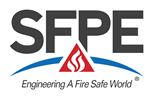FEMTC 2022
Evaluation Of A Using A Multi-Zone Modelling Concept For Large Volume Buildings And Tunnels 
Nils Johansson - Lund University
Abstract
A multi-zone modelling concept could be a good alternative to two-zone modelling and CFD modelling for some situations when performing fire safety designs. However, few such models exist, and the evaluation of the concept is scarce. This paper is therefore dedicated to study the multi-zone modelling concept and its usefulness in fire safety engineering by benchmarking it against experimental data and simulations with the Fire Dynamics Simulator. Two different areas are studied in the paper: large volume buildings and tunnel fires. The fire dynamics of the two different areas can be very different which means that the multi-zone model used for the tunnel scenarios have been adapted to including features that consider longitudinal ventilation flow, tunnel gradient and different tunnel section representations.
The simulations of the large volume buildings results in reasonable estimates of gas temperatures, and it is also concluded that the multi-zone concept can be a complement to more advanced numerical modelling tools like FDS. The results from the tunnel scenarios indicate that the multi-zone model can provide conservative calculation results. The model generally performs well 50-200 m from the fire for heat release rates in the magnitude of 5-20 MW and moderate longitudinal ventilation flows. However, for the studied scenario with a very high heat release rate the multi-zone model results in higher temperatures closer to the ceiling and lower temperatures at lower levels, compared to FDS.
Presentation
Resources
| Paper | Presentation | ||
|---|---|---|---|
| HTML | HTML | ||
| Resources Archive File (.zip) | |||

